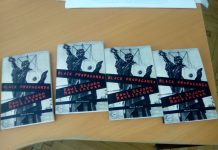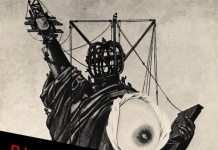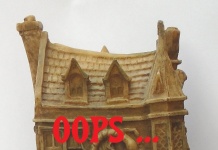
The influence of Robert Fordyce Aickman continues to grow as part of the current renaissance of strange/weird fiction – perhaps because he offers something more adult and sophisticated than the tentacular effusions of Lovecraftian horror; perhaps just because of how good he was. As Peter Straub wrote in his introduction to the writer’s work, “Aickman at his best was this century’s most profound writer of what we call horror stories and he, with greater accuracy, preferred to call strange stories.” Aickman’s Heirs, edited by Simon Strantzas, is an ambitious, and mostly successful, attempt to reflect just how influential his writing has become.
It’s also an attempt to explore and extend that influence into entirely new areas. As Strantzas says in his introduction, “if you’ve picked up this book because you’re a fan of Robert Aickman’s fiction and are looking for more of the same, you’ve come to the wrong place. What follows in these pages are not pastiches of Aickman’s inimitable style.” He continues: “What I’d hoped for when inviting authors to be part of this volume was that they might mine their own personal psychology, tap their own subconsciousness, much as Aickman had, and create works that were impossible from another’s pen.” And overall, he and his chosen authors have accomplished that superbly.
The one caveat is that some of the tales do seem to stay rather too much in Aickman’s shadow. Some, but by no means all, follow Aickman’s recurrent template of a shy, unworldly, middle-aged male Anglo protagonist at odds with the world just a little too faithfully – not least given what Richard T. Kelly calls “Aickman’s refined facility for writing female protagonists.” Others take on board Aickman’s great way with female characters without entirely making it their own. Nina Allan’s tale “A Change of Scene” is even a wholesale revisiting of Aickman’s “Ringing the Changes,” with the same mysterious seaside town of Holihaven and the same Phyrnne as in the original, some decades after.
Some – but again, by no means all – also appear to cultivate a slightly arch, mannered tone of voice that echoes Aickman. As Jean Richardson remarked in her afterword to the 2014 Faber edition of Cold Hand in Mine, “his stories have an old-fashioned vocabulary that was in no way an affectation. Robert really spoke like that, and his manner belonged in the first half of the twentieth century.” In the hands of other writers inspired by Aickman, however, that manner can come across as an affectation. Stories in this volume that suffer slightly from that flaw, at least until they get up speed, are “Change of Scene” and Richard Gavin’s “Neithernor.” However, both of those tales, and the others in this collection, transcend that limitation by the sheer power of their conception: “Neithernor”‘s reveal, when it comes, is especially nasty.
Some of the stories are more explicit in their structure and rationale than Aickman’s often cryptic, mysterious tales – Nadia Bulkin’s “Seven Minutes in Heaven” being one signature example – but none the worse for it. Others are totally outside anything in Aickman’s imagination but achieve the same level of enigmatic strangeness – John Langan’s tale of weirdness among strippers, “Underground Economy,” being a standout example. All in all, if Aickman was one of the later 20th century’s greatest creators of strange stories, this tribute volume includes some of the early 21st century’s greatest strange stories. Emulation need aspire no higher. Recommended.


































